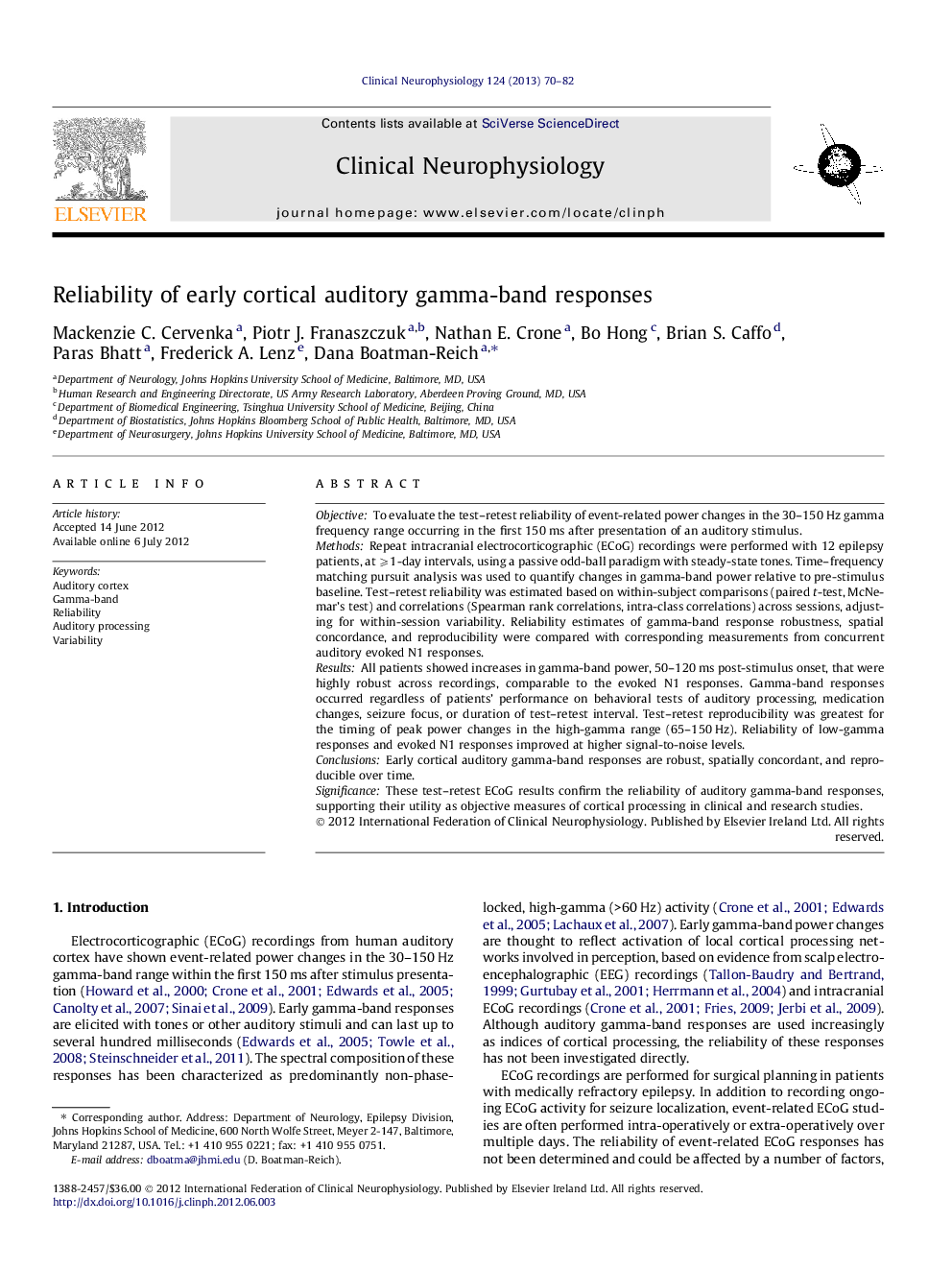| Article ID | Journal | Published Year | Pages | File Type |
|---|---|---|---|---|
| 3043035 | Clinical Neurophysiology | 2013 | 13 Pages |
ObjectiveTo evaluate the test–retest reliability of event-related power changes in the 30–150 Hz gamma frequency range occurring in the first 150 ms after presentation of an auditory stimulus.MethodsRepeat intracranial electrocorticographic (ECoG) recordings were performed with 12 epilepsy patients, at ⩾1-day intervals, using a passive odd-ball paradigm with steady-state tones. Time–frequency matching pursuit analysis was used to quantify changes in gamma-band power relative to pre-stimulus baseline. Test–retest reliability was estimated based on within-subject comparisons (paired t-test, McNemar’s test) and correlations (Spearman rank correlations, intra-class correlations) across sessions, adjusting for within-session variability. Reliability estimates of gamma-band response robustness, spatial concordance, and reproducibility were compared with corresponding measurements from concurrent auditory evoked N1 responses.ResultsAll patients showed increases in gamma-band power, 50–120 ms post-stimulus onset, that were highly robust across recordings, comparable to the evoked N1 responses. Gamma-band responses occurred regardless of patients’ performance on behavioral tests of auditory processing, medication changes, seizure focus, or duration of test–retest interval. Test–retest reproducibility was greatest for the timing of peak power changes in the high-gamma range (65–150 Hz). Reliability of low-gamma responses and evoked N1 responses improved at higher signal-to-noise levels.ConclusionsEarly cortical auditory gamma-band responses are robust, spatially concordant, and reproducible over time.SignificanceThese test–retest ECoG results confirm the reliability of auditory gamma-band responses, supporting their utility as objective measures of cortical processing in clinical and research studies.
► We examined the reliability of auditory gamma-band responses using intracranial ECoG recordings. ► Gamma-band power increases were robust, spatially concordant, and reproducible across sessions. ► The timing of event-related power changes was highly reliable and reproducible. ► Gamma responses provide a reliable index of cortical processing for clinical and research studies.
